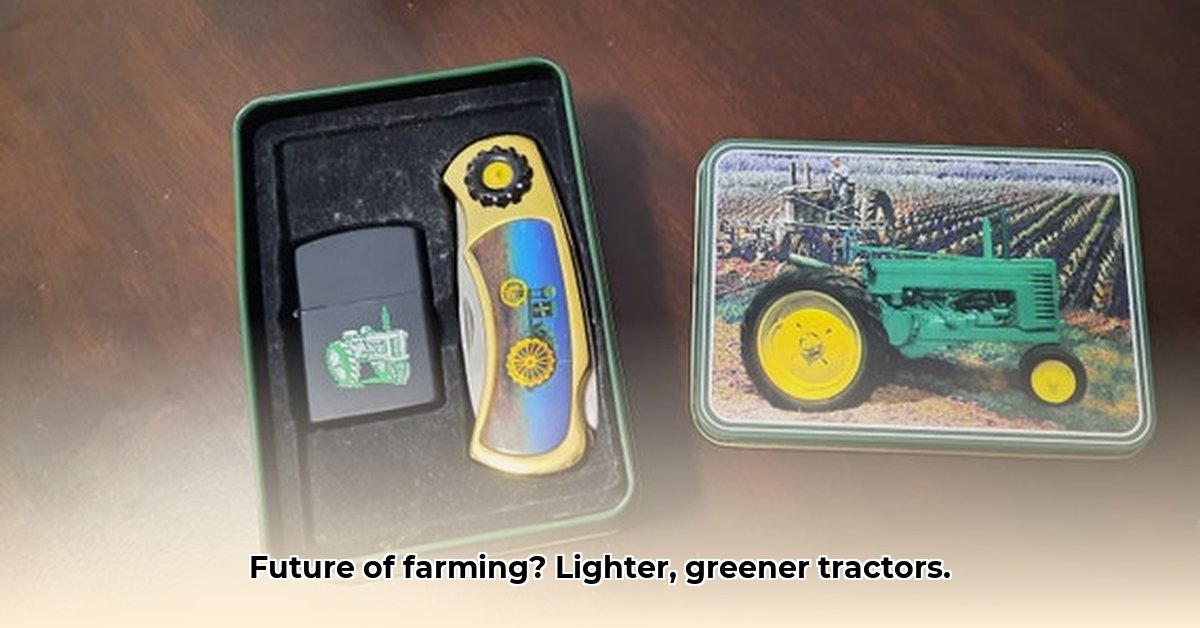
Tractor Lighter Innovations: Fueling a Sustainable Future
Sustainable agriculture is rapidly gaining traction, driven by growing consumer demand for environmentally friendly products and increasing awareness of the environmental impact of conventional farming practices. However, the tools and equipment used in agriculture often lag behind in adopting sustainable technologies. This presents a significant market opportunity for innovation in sustainable agricultural tools and machinery. The concept of a "tractor lighter," while seemingly simple, aptly symbolizes this shift toward a greener approach. Even small improvements in efficiency and environmental impact can make a substantial difference when scaled across the global agricultural landscape. How can the industry accelerate this crucial transition? For more information on modern agricultural equipment, check out John Deere tractors.
Reimagining Farm Tools: Beyond the Usual
Conventional farm machinery relies heavily on fossil fuels, contributing significantly to greenhouse gas emissions. The transition to sustainable alternatives requires innovative solutions in design, materials, and manufacturing processes. This isn't simply about replacing existing tools with "greener" versions; it necessitates a fundamental rethinking of the entire lifecycle of agricultural equipment – from sourcing sustainable materials to designing for durability, repairability, and responsible end-of-life management. Consider the potential of a tractor lighter crafted from recycled materials, showcasing a commitment to circular economy principles. Such a seemingly small detail highlights a larger commitment to environmental responsibility.
How can we create equipment that is not only sustainable but also improves farmers' working conditions, reducing fatigue and increasing comfort? This requires a paradigm shift in agricultural engineering.
The Power of Sustainable Design: More Than Meets the Eye
Sustainable design extends beyond material selection. It encompasses the entire production and use lifecycle. Lightweight, ergonomic tools can reduce farmer fatigue and improve working conditions. Renewable energy sources can power equipment, reducing reliance on fossil fuels. Designing for durability and repairability minimizes waste and extends the lifespan of tools. A tractor lighter, for example, could incorporate design features promoting longevity and ease of repair, thereby reducing the need for frequent replacements. And what about the environmental impact of manufacturing, transportation, and disposal? Sustainable design requires a holistic approach addressing these factors.
What innovative materials and manufacturing processes can we leverage to create more sustainable, durable, and efficient agricultural equipment?
Market Forces and Innovation: A Perfect Storm
The market is ripe for disruption. Farmers increasingly prioritize environmental sustainability and seek eco-friendly alternatives. Investors recognize the financial viability of sustainable agricultural technologies. Governments are implementing policies incentivizing sustainable farming practices. These converging trends are creating a rapidly expanding market for sustainable agricultural tools. This translates into substantial investment opportunities in research and development for new materials, technologies, and business models. Companies embracing sustainability will gain a competitive advantage.
Given the increasing consumer preference for sustainably produced food, how will this influence the demand for sustainable agricultural tools in the coming years?
Challenges and Opportunities: A Balanced View
The journey toward a fully sustainable agricultural sector is not without its challenges. Developing affordable, durable, and truly sustainable tools requires significant investment in research, development, and infrastructure. Educating farmers on the benefits and proper use of new technologies is also essential. Furthermore, the initial investment costs for sustainable equipment might present a barrier for some farmers.
“The transition to sustainable agriculture presents both opportunities and challenges. While we are seeing increasing demand for sustainable products, it's crucial to consider the economic feasibility for farmers and to develop efficient and affordable solutions.” - Dr. Anya Sharma, Agricultural Economist, University of California, Berkeley.
However, the potential benefits are substantial: reduced greenhouse gas emissions, improved soil health, enhanced biodiversity, and a more secure and resilient food system. The "tractor lighter" metaphor underscores how seemingly small design choices can powerfully signal commitment to environmental integrity and drive wider adoption of sustainable practices.
The Future of Farming: A Green Revolution
The demand for sustainability in agriculture is not a passing trend; it represents a fundamental shift toward a more environmentally responsible and resilient food system. This presents an urgent need for innovation in agricultural tools and technologies. Investing in sustainable agricultural tools is not merely environmentally responsible but also provides a strong financial opportunity. The future of farming depends on it.
How can we effectively bridge the gap between technological innovation and farmer adoption, ensuring that sustainable tools reach and benefit those who need them most?
Actionable Steps for Everyone Involved
- Manufacturers: Invest heavily in R&D focus on sustainable materials, design for durability and repairability, and adopt circular economy principles.
- Farmers: Explore and adopt eco-friendly alternatives; advocate for government incentives and support programs. Participate in farmer-to-farmer knowledge-sharing initiatives.
- Governments: Offer subsidies and grants for sustainable technologies; implement regulations promoting sustainability. Invest in educational programs and farmer support services.
- Consumers: Support brands committed to sustainable agriculture; demand eco-friendly products; participate in sustainable food systems.
The future of agriculture is inextricably linked to its sustainability. By embracing innovation, collaboration, and responsible practices, we can build a greener, more resilient food system for all.